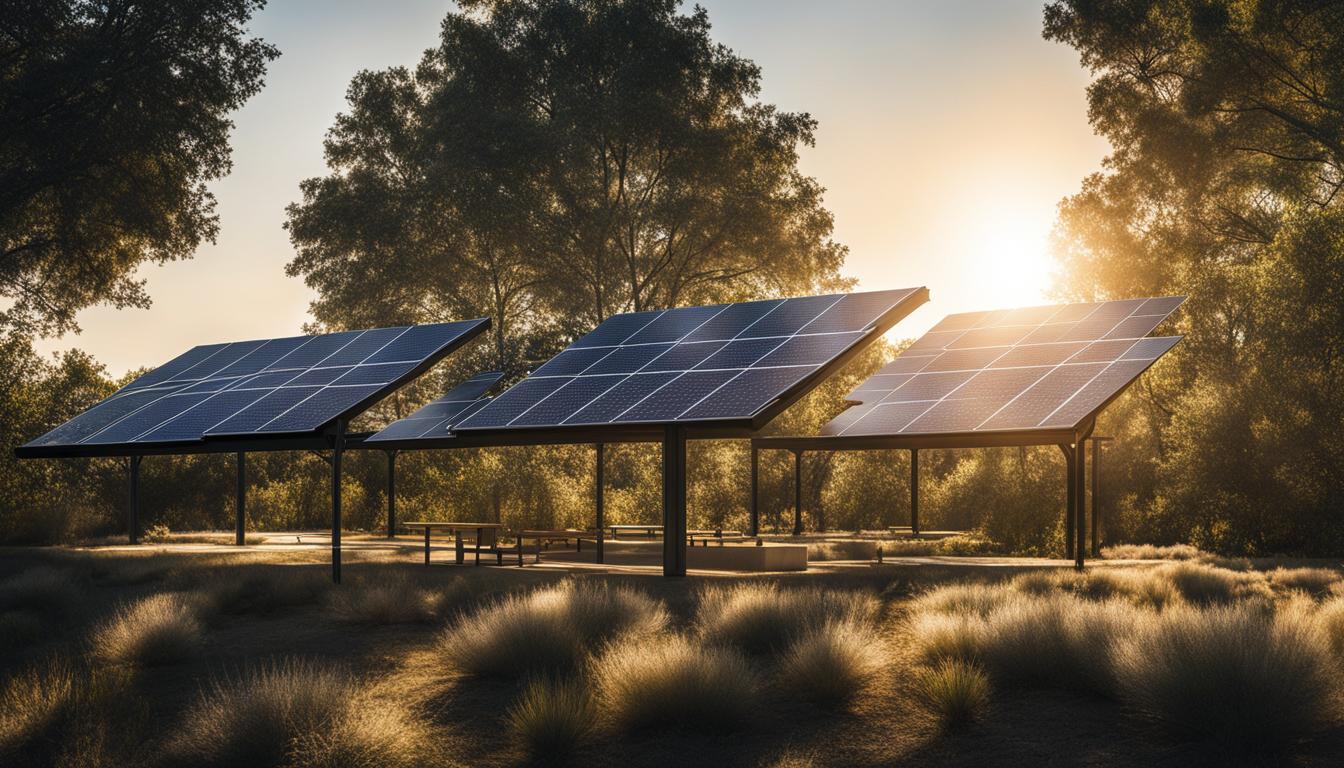
Do modern solar panels work in the shade? This is a common question that many people ask when considering whether to install solar panels in their homes or businesses. The answer is not straightforward. While modern solar panels are designed to generate electricity from sunlight, shade can impact their efficiency and overall performance.
In this section, I will provide an overview of modern solar panels and explain how they work. Additionally, I will discuss the impact of shade on their efficiency and performance. By the end of this section, you will have a better understanding of what to expect from modern solar panels when they are exposed to shade.
How Do Modern Solar Panels Work?
Modern solar panels are fascinating pieces of technology that allow us to harness the power of sunlight and convert it into usable electricity. They operate on a simple principle: solar cells (also known as photovoltaic cells) absorb sunlight and convert its energy into a flow of electrons that can be used as electricity.
A typical solar cell consists of a thin wafer of silicon which is treated with various materials to form a structure that allows it to generate electricity. The surface of the cell is treated with a substance that causes a positive charge to develop on one side, and a negative charge on the other. When sunlight strikes the cell, the energy knocks electrons out of the silicon atoms and creates a flow of electrons.
Several solar cells are wired together to form a solar panel, and multiple panels are connected to create a solar array. The electricity generated by the solar cells is direct current (DC), but it needs to be converted into alternating current (AC) to power most household appliances. This conversion is done by a device called an inverter, which is typically included as part of the solar panel system.
To work efficiently, modern solar panels need to be exposed to plenty of sunlight, ideally in unobstructed areas and in optimal conditions. Factors that can impact the performance of solar panels include temperature, shading, and the angle of the sun. Therefore, it is important to take these factors into consideration when installing solar panels to ensure maximum energy generation.
In summary, modern solar panels work by converting sunlight into electricity using photovoltaic cells and an inverter. They require optimal conditions and sunlight exposure to work efficiently and generate maximum solar energy.
Solar Panels in the Shade: Efficiency and Performance
When solar panels are exposed to shade, their ability to generate electricity can be significantly impacted. Shading can occur for several reasons, including nearby buildings or trees casting shadows on the panels. In this section, I will explore how shading affects the efficiency and performance of solar panels.
Factors that Influence Performance in Shaded Conditions
Several factors can influence the performance of solar panels in shaded conditions. One of the most important is the type of panel technology in use. Some modern solar panels are designed to handle shading more efficiently than others.
- Monocrystalline panels, for example, are less affected by shading than polycrystalline panels.
- Thin-film solar panels are also relatively tolerant of shading.
Beyond the panel technology used, other factors can impact the performance of solar panels in the shade, including:
- The orientation and tilt of the panels
- The size and pattern of shading
- The time of day when shading occurs
The Impact of Shading on Efficiency
Shading can significantly impact the overall efficiency of solar panels. Even the presence of a small amount of shade can cause a noticeable decrease in the output of a solar panel. The amount of sunlight received by a solar panel is directly related to the amount of electricity generated, making shading a critical factor to consider when designing and installing a solar energy system.
Strategies for Mitigating the Impact of Shading
Despite the negative impact of shading on solar panel performance, there are strategies that can be used to mitigate its effects. One of the most effective is to use solar panels that are specifically designed to handle shading. By selecting appropriate technology and positioning the panels correctly, it is possible to maximize their efficiency and output, even when they are exposed to shading.
Another strategy for reducing the impact of shading is to use micro-inverters or power optimizers. These devices work by optimizing the output of individual solar panels, allowing them to perform better in shaded conditions and maximizing their overall efficiency.
What to Expect from Modern Solar Panels in Shade
When it comes to the efficiency and performance of solar panels, shading can have a significant impact. In ideal conditions, modern solar panels can work at peak efficiency, converting as much sunlight as possible into usable energy. However, when shading occurs, the panels’ ability to work at optimal levels can be considerably reduced.
When solar panels are shaded, they work much harder to produce the same amount of energy as they would in direct sunlight. This results in a decrease in efficiency and a corresponding reduction in performance. The extent to which shading affects solar panels’ work depends on several factors, including the degree of shading, time of day, and season.
To mitigate the impact of shading, there are several strategies that can be employed. One option is to consider installing micro-inverters or optimizers that can help the panels work more efficiently in shaded conditions. Choosing the right panel technology and positioning can also be crucial in maximizing efficiency and performance in low-light areas.
It’s important to note that shade is not the only factor that can impact solar panel performance. Sunlight conditions, such as the time of day, season, and geographic location, also play a critical role. Therefore, when installing solar panels, it’s essential to consider the surrounding environment and choose the right technology that can best adapt to the available sunlight.
In conclusion, while modern solar panels can work efficiently in ideal sunlight conditions, shading can have a significant impact on their performance and efficiency. By considering the factors that influence solar panel performance and implementing the right strategies, we can mitigate the impact of shading and ensure optimal energy generation in a wide range of conditions.
